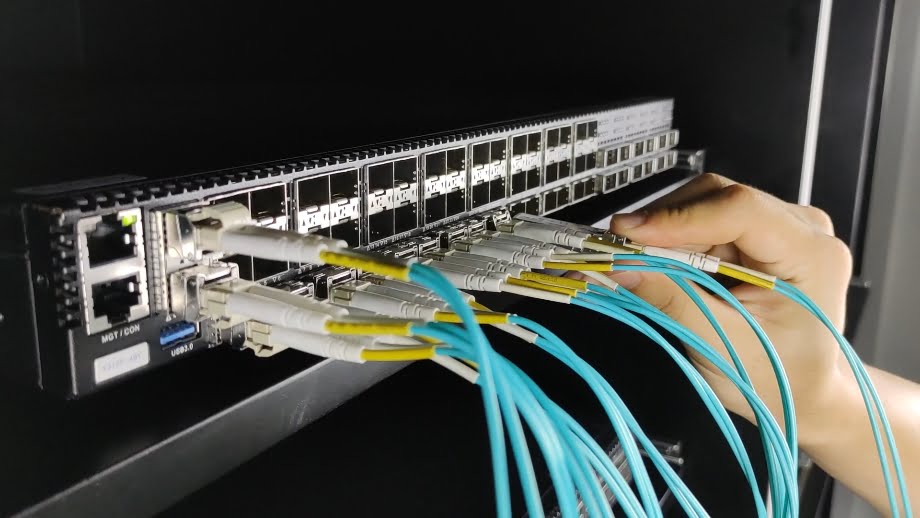Looking for Optical Transceiver Modules? 8 Essential Parameters You Should Focus On
written by Asterfuison
Table of Contents
An optical transceiver module (optic module or simply a transceiver) is a device that integrates a transmitter and a receiver for transmitting and receiving optical signals over fiber optic cables. These modules convert electrical signals into optical signals for transmission and then convert received optical signals back into electrical signals.
When buying optical transceiver modules, there are several parameters to consider to ensure compatibility and optimal performance. Here are some key parameters to focus on.

1. Form Factor(SFP/SFP+/SFP28/QSFP/QSFP28/QSFP56/QSFP-DD)
The form factor refers to the physical dimensions and interface type of the transceiver module. Common form factors include SFP (Small Form-Factor Pluggable),QSFP (Quad Small Form-Factor Pluggable).
SFP transceivers are widely used in data centers. They support data rates from 1 Gbps to 10 Gbps and are available for both single-mode and multimode fiber. SFP transceivers come in different variants, such as SFP, SFP+, and SFP28, to accommodate different data rates.
QSFP (Quad Small Form-Factor Pluggable) transceivers have a higher data rate and density compared to SFP. They support data rates from 40 Gbps to 400 Gbps, making them suitable for high-speed data center applications. QSFP transceivers come in variants like QSFP+, QSFP28, QSFP56, and QSFP-DD, depending on the data rate and interface requirements.
QSFP-DD (Double Density) transceivers are a newer form factor that supports higher data rates and density. They offer up to 400 Gbps per port and feature an upgraded electrical interface. QSFP-DD transceivers are backward compatible with QSFP and QSFP28 ports, providing a smooth transition to higher speeds.
Ensure that the form factor of the transceiver is compatible with the network equipment or switch you intend to use it with.
2. Data Rate of Optical Transceiver Modules
The data rate indicates the maximum transmission speed of the transceiver module. It is typically specified in terms of gigabits per second (Gbps) or terabits per second (Tbps). Choose a transceiver module that supports the required data rate for your application. Some common data rates of optical transceiver modules: 1G, 10G, 25G, 40G, 100G, 200G, 400G.
3. Transmission Distance
Consider the transmission distance requirement for your application. Transceiver modules are available in different variants optimized for short-range (SR), intermediate-range (IR), long-range (LR), or extended-range (ER) transmission distances. Select a module that matches your distance requirement.
4. Wavelength
Optical signals are transmitted using specific wavelengths of light. The wavelength is specified in nanometers (nm). Common wavelengths include 850nm, 1310nm, and 1550nm. Ensure that the wavelength of the transceiver module matches the wavelength supported by your network equipment.
5. Fiber Type
Different transceiver modules are designed for specific fiber types, such as single-mode (SMF) or multimode (MMF) fiber. Verify the compatibility of the transceiver module with the type of fiber you are using in your network.
6. Connector Type
Check the connector type of the transceiver module, such as LC (Lucent Connector), SC (Subscriber Connector), or MPO (Multi-fiber Push-On). Ensure that the connector type matches the connectors on your fiber optic cables and network equipment.
7. Digital Diagnostics (DDM)
DDM, also known as Digital Optical Monitoring (DOM), provides real-time monitoring and diagnostic information about the transceiver module, such as temperature, voltage, and optical power levels. Consider whether DDM functionality is necessary for your monitoring and troubleshooting needs.
8. Brand and Compatibility
Opt for reputable brands and ensure compatibility with your network equipment. Some manufacturers may have specific compatibility guidelines or restrictions, so it’s important to check for compatibility with your specific devices.
By considering these parameters and understanding your specific requirements, you can make an informed decision when purchasing optical transceiver modules for your fiber optic network.



